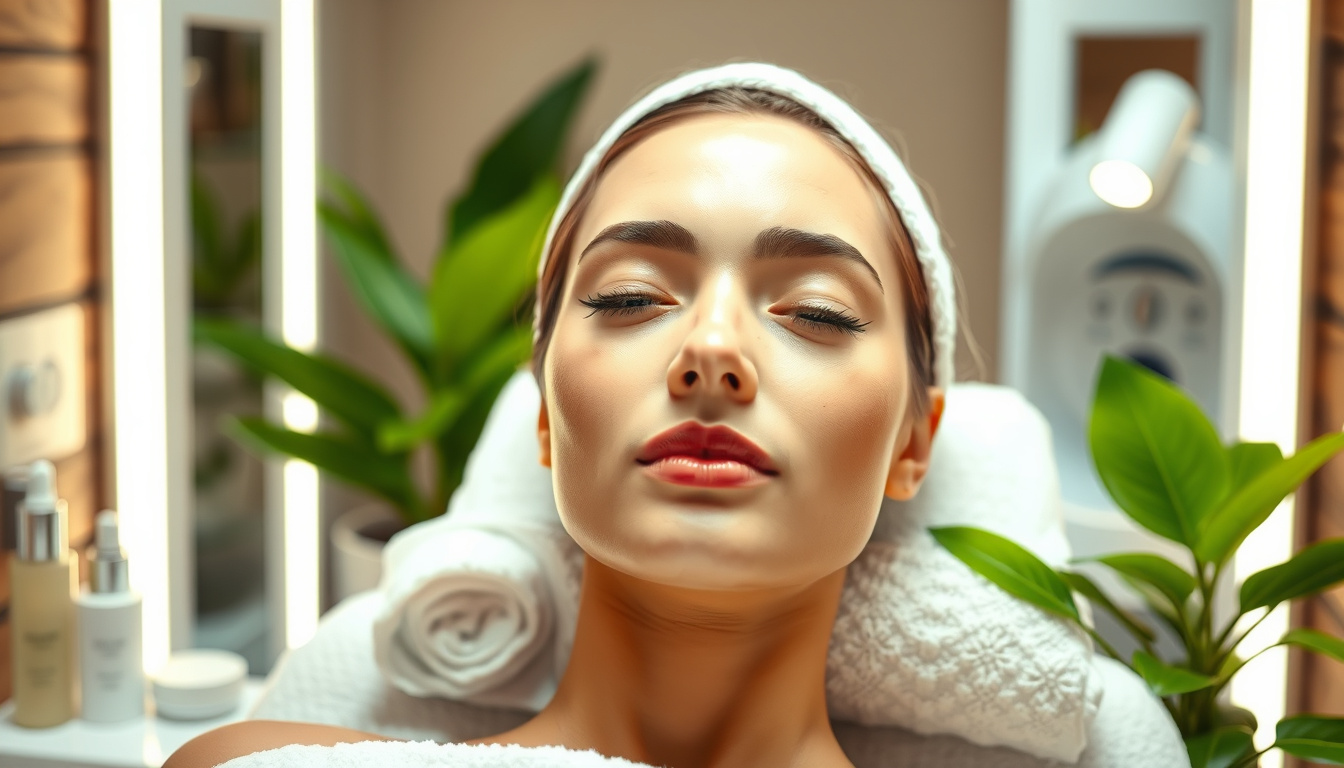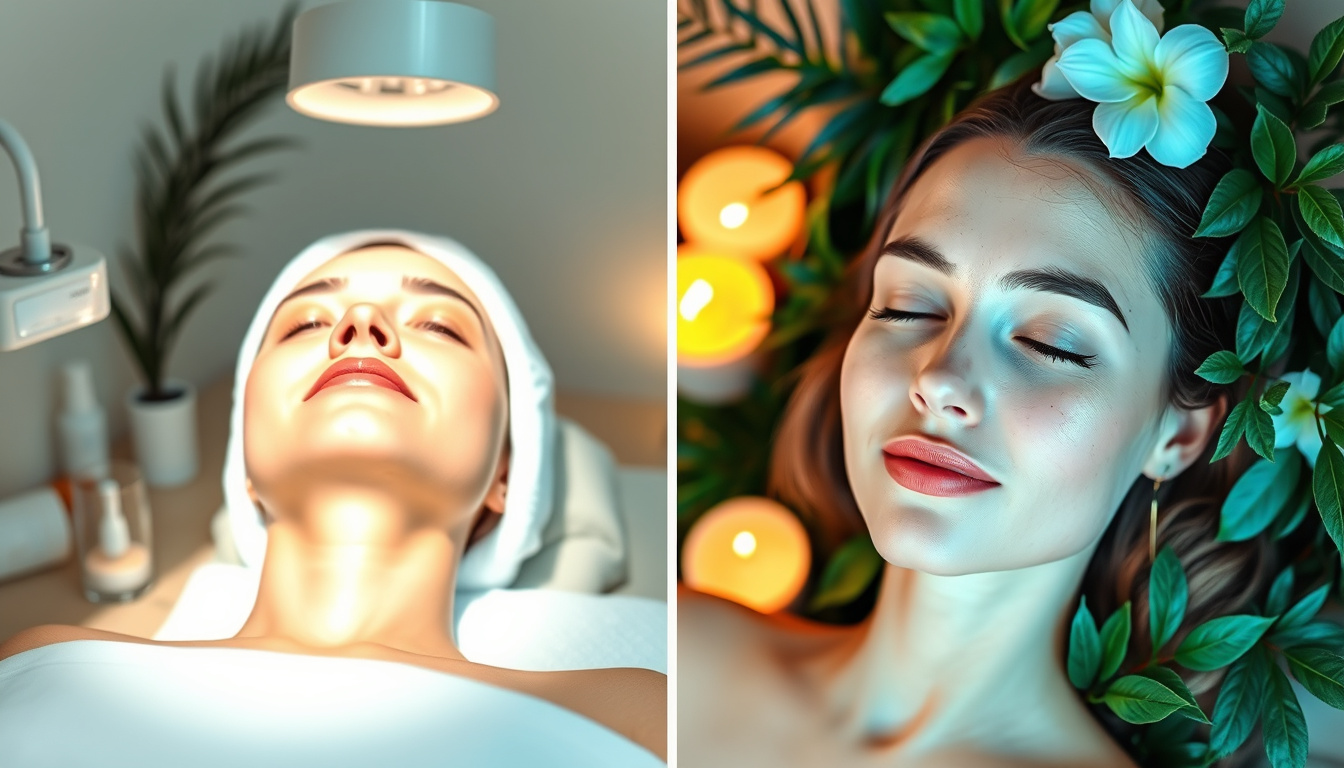Unlock Flawless Skin: Top Resurfacing Techniques You Need to Know
 Donna Johnson
Donna JohnsonAchieving flawless skin is a desire that many share, and fortunately, modern aesthetics offers a range of solutions. Skin resurfacing techniques are at the forefront of these solutions, providing effective ways to rejuvenate and revitalize your complexion. In this article, we will explore what skin resurfacing involves, the most popular techniques available, how to choose the right treatment for your skin type, and tips for post-treatment care. Whether you're looking to reduce fine lines, remove acne scars, or simply refresh your skin’s appearance, understanding these resurfacing techniques is key to unlocking your best skin ever.

Key Takeaways
- Skin resurfacing rejuvenates the complexion by removing damaged outer layers.
- Chemical peels, laser treatments, and microdermabrasion are popular resurfacing techniques.
- Selecting the appropriate resurfacing technique depends on your unique skin type and concerns.
- Post-treatment care is crucial for maintaining results and ensuring skin health.
- Consulting a skincare professional can provide tailored advice for optimal outcomes.
Understanding Skin Resurfacing: What It Is and How It Works
Understanding skin resurfacing is essential for anyone looking to rejuvenate their complexion and enhance their skin’s overall appearance. Skin resurfacing refers to a variety of cosmetic procedures aimed at improving the texture and tone of the skin. The main goal of these resurfacing techniques is to remove damaged outer layers of skin, thereby promoting the growth of healthier, more youthful skin beneath. Popular resurfacing techniques include chemical peels, microdermabrasion, and laser treatments, each offering unique benefits tailored to different skin concerns. For instance, chemical peels use acid solutions to exfoliate the skin, improving issues like pigmentation and fine lines, while microdermabrasion employs a diamond-tipped wand to gently scrub away dead skin cells. Laser resurfacing, on the other hand, utilizes focused light to target deeper layers of skin, resulting in an even more dramatic transformation. By understanding these effective resurfacing techniques, individuals can make informed decisions on the best approach to achieve their desired skincare results.
Different Types of Resurfacing Techniques: Chemical Peels, Laser Treatments, and Microdermabrasion
When it comes to rejuvenating and revitalizing your skin, understanding the various resurfacing techniques available is crucial. Three of the most popular methods include chemical peels, laser treatments, and microdermabrasion. Chemical peels use a solution to remove the upper layers of skin, revealing fresher, smoother skin beneath and addressing issues like acne, pigmentation, and fine lines. Laser treatments, on the other hand, utilize focused light to stimulate collagen production and improve skin texture, effectively treating deeper concerns such as scars and wrinkles. Lastly, microdermabrasion is a non-invasive procedure that exfoliates the skin using tiny crystals, helping to improve overall skin tone and clarity. Each of these resurfacing techniques offers unique benefits tailored to different skin types and concerns, making it essential to consult with a skincare professional to determine which approach is right for you. By exploring these options, you can make informed decisions toward achieving your desired skin rejuvenation goals.
'Beautiful skin requires commitment, not a miracle.' - Erno Laszlo
Choosing the Right Resurfacing Technique for Your Skin Type
Choosing the right resurfacing technique for your skin type is crucial for achieving optimal results while minimizing risks. Resurfacing techniques, which include options like laser treatments, chemical peels, and microdermabrasion, differ in their approach and effectiveness based on individual skin concerns. For instance, if you have sensitive skin, lighter resurfacing techniques such as microdermabrasion may be more suitable as they offer a gentle exfoliation without significant irritation. On the other hand, those dealing with deeper scars or significant sun damage might find laser resurfacing more effective, though it does come with a recovery period. Understanding your skin type—whether it’s oily, dry, normal, or sensitive—along with the specific issues you want to address, such as fine lines or uneven texture, will guide you in selecting the most appropriate resurfacing technique. Always consult with a qualified skincare professional to tailor the treatment plan to suit your needs for the best possible outcomes.

What to Expect During and After a Resurfacing Treatment
Resurfacing techniques are becoming increasingly popular for those looking to rejuvenate their skin and address various cosmetic concerns. During a resurfacing treatment, patients can expect a thorough consultation to assess their skin type and discuss the best techniques tailored to their needs. The process may involve the application of laser technology, chemical peels, or microneedling, all designed to remove the outer layers of skin and stimulate collagen production. Patients will likely feel some discomfort, akin to mild sunburn, which typically subsides shortly after the procedure. After treatment, it’s crucial to follow post-care instructions, which may include avoiding sun exposure, using specific moisturizers, and applying sunscreen religiously to protect the newly exposed skin. Results can vary, but many patients notice smoother, more vibrant skin within a few weeks, making resurfacing techniques a powerful option for achieving a youthful appearance. If you're curious about how resurfacing techniques can transform your skin, visit https://facelift.precisionaestheticsmd.com/ for more information.
Tips for Maintaining Flawless Skin Post-Resurfacing
Maintaining flawless skin after undergoing resurfacing techniques is essential for achieving and prolonging the desired results. First and foremost, hydration plays a crucial role; you should keep your skin moisturized to support healing and prevent dryness. Invest in high-quality, hydrating products that are free from irritating ingredients. Additionally, it's important to protect your skin from UV rays by applying broad-spectrum sunscreen daily, as resurfacing can leave your skin more sensitive to sunlight. Regularly scheduled follow-ups with your dermatologist can help monitor your skin's recovery and ensure it's responding well to the resurfacing techniques performed. Avoid exfoliating and using harsh cleansers for at least a couple of weeks post-treatment, instead opting for gentle, non-comedogenic options. Lastly, maintaining a balanced diet rich in antioxidants can also promote skin healing and health, ensuring that your skin remains radiant and youthful long after your resurfacing session. For more tips on skin care and aesthetic treatments, visit https://facelift.precisionaestheticsmd.com/.
Frequently Asked Questions
What is skin resurfacing?
Skin resurfacing is a cosmetic procedure designed to improve the overall appearance, texture, and tone of the skin by removing damaged outer layers, allowing healthier skin to emerge. It can reduce the appearance of scars, fine lines, and sun damage.
What are the main types of resurfacing techniques?
The main types of resurfacing techniques include chemical peels, laser treatments, and microdermabrasion. Each method has its unique benefits and is suitable for different skin types and concerns.
How do I choose the right resurfacing technique for my skin type?
Choosing the right resurfacing technique depends on your skin type, concerns, and goals. Consulting with a dermatologist can help you determine the best option for your specific needs and expectations.
What can I expect during and after a resurfacing treatment?
During a resurfacing treatment, you may experience varying levels of discomfort, which can be managed with numbing agents. After treatment, you might encounter redness, peeling, or sensitivity, which typically resolves within days to weeks, depending on the technique used.
How can I maintain flawless skin after resurfacing?
To maintain flawless skin post-resurfacing, follow a good skincare routine, use sun protection, stay hydrated, and avoid harsh products. Regular follow-ups with your skincare professional can also help keep your skin healthy.
Subscribe to my newsletter
Read articles from Donna Johnson directly inside your inbox. Subscribe to the newsletter, and don't miss out.
Written by
